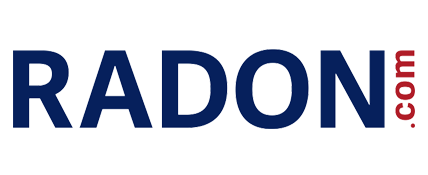Radon Testing
Radon testing is the process of measuring the concentration of radon gas in a specific area, typically in homes or buildings, to assess potential health risks.
Radon is a colorless, odorless, and tasteless radioactive gas that naturally occurs from the decay of uranium in soil, rock, and water. When radon gas accumulates indoors, it can pose serious health risks, including lung cancer. The EPA recommends that you test for radon to make sure your levels are within the acceptable level of 4.0 picocuries per liter (pCi/L) for air, and the American Association of Scientists and Technologists (AARST) recommends radon in water mitigation at 4,000 pCi/L.
Why Radon Testing is Important
- Long-term exposure to high levels of radon can lead to lung cancer. According to the Environmental Protection Agency (EPA), radon is the second leading cause of lung cancer in the United States, after smoking.
- Because radon is undetectable by human senses, the only way to know if a building has a radon problem is through testing.
- Radon levels in air and water can vary significantly from one area to another, and even from one building to another within the same area.
| Short-Term Testing Duration: Typically 2 to 90 days | Long-Term Testing Duration: More than 90 days, often up to a year |
| Devices: Charcoal Devices, Electret Ion Chambers, Continuous Radon Monitors | Devices: Alpha track detectors and Continuous Radon Monitors |
| Usage: Often used for inital screening to determine if further testing is necessary and useful for making mitigation decisions. | Usage: Provides a more accurate annual average radon level which is useful for making mitigation decisions. |
| Short-Term Testing Devices: Specialized Water Sample Collection Vial |
| Usage: Allows for early detection and preventative measures. This is particularly beneficial for those using well water, as it helps in making informed decisions about necessary water treatment systems or radon mitigation techniques. |
DIY Radon Test Kits
Available at radon.com, our radon test kits include step by step instructions for placement and require the user to send the sample to an accredited lab for free professional analysis.
Radon testing is a crucial step in ensuring indoor air quality and protecting occupants' health from the dangers of radon exposure. Regular testing and, if necessary, implementing mitigation strategies can significantly reduce the health risks associated with radon.
Professional Radon Testing
If you seek a professional, make sure they are certified, licensed and insured. Look for certifications from reputable organizations such as the National Radon Proficiency Program (NRPP) or the National Radon Safety Board (NRSB). These Radon professionals are trained in this field and will use advanced equipment to provide expert analysis on radon testing results. They will advise you on what steps to take next and when, if needed.
